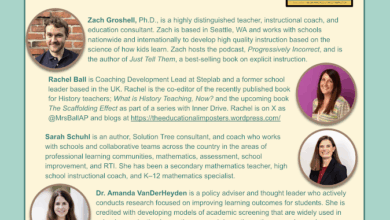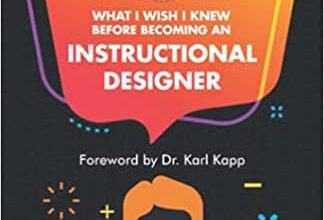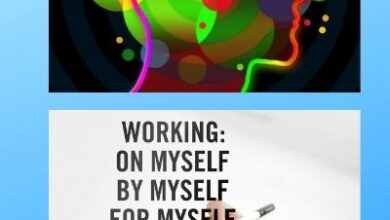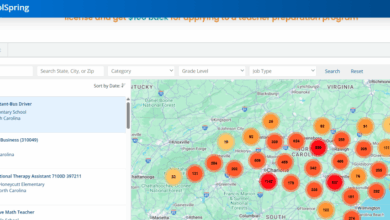Top Strategies Teachers Use to Foster Lifelong Learning

In today’s rapidly evolving world, the concept of lifelong learning is more important than ever. We live in an age where information is at our fingertips, and staying curious is essential to success. Teachers are at the forefront of this movement, nurturing not just students’ academic skills but also their ability to become self-directed learners for life. But how exactly do teachers cultivate this mindset?
Let’s dive into the top strategies teachers use to foster lifelong learning and how these techniques shape curious, engaged individuals who thrive well beyond the classroom.
1. Encouraging Curiosity Through Questions
One of the most powerful tools in a teacher’s arsenal is encouraging curiosity. Rather than focusing solely on the right answer, many educators promote the art of questioning. By encouraging students to ask “why” and “how,” they ignite curiosity that keeps students exploring even after the lesson ends.
For example, instead of simply teaching the formula for a math problem, teachers might ask, “Why do you think this formula works?” or “How could this be applied in real life?” This approach not only engages students in the moment but also teaches them that learning is about the process, not just the result.
The ability to question effectively is the foundation of lifelong learning. It creates a mindset that learning doesn’t stop with graduation, but continues as long as we’re willing to seek answers.

2. Teaching Problem-Solving Skills
Another critical strategy teachers use to foster lifelong learning is teaching problem-solving skills. In the real world, challenges don’t come with step-by-step instructions, so it’s essential that students know how to approach problems from different angles.
A common way teachers nurture these skills is through project-based learning. When students are given real-world problems to solve, they develop critical thinking skills that will serve them for years to come. By working through challenges, experimenting with solutions, and reflecting on the outcomes, students build the resilience and creativity needed for lifelong growth.
Moreover, this strategy encourages self-sufficiency. Rather than waiting for someone to give them the solution, students learn how to seek out answers themselves—a hallmark of lifelong learners.
3. Encouraging a Growth Mindset
Perhaps one of the most influential methods teachers use to promote lifelong learning is fostering a growth mindset. Coined by psychologist Carol Dweck, a growth mindset is the belief that abilities and intelligence can be developed through hard work, dedication, and learning from failure.
Teachers encourage this by praising effort over results. For instance, rather than congratulating a student for getting an A on a test, a teacher with a growth mindset might say, “I’m proud of how hard you worked on that!” This shift in focus helps students see learning as a journey rather than a destination.
A growth mindset also teaches students that failure is not the end—it’s an opportunity to learn and improve. This resilience is key to lifelong learning, as individuals who aren’t afraid of failure are more likely to take risks, try new things, and continually seek out growth.
4. Integrating Technology for Self-Directed Learning
Incorporating technology into the classroom is another effective way to encourage lifelong learning. With online resources, educational apps, and digital tools, students have endless opportunities to take control of their own education.
For instance, platforms like Khan Academy, Coursera, and even YouTube offer access to tutorials and lectures on virtually any topic. By introducing students to these resources early on, teachers empower them to continue learning outside of the traditional classroom setting.
Furthermore, when students are given the freedom to explore these tools, they develop the skills needed to be self-directed learners—an essential trait for anyone who hopes to thrive in a world of constant change.
5. Emphasizing the Importance of Reflection
Reflection is a powerful, yet often overlooked, tool for fostering lifelong learning. Teachers who make time for reflection in the classroom teach students how to think critically about their own learning process.
For example, after completing a project or assignment, teachers might ask students to reflect on what they learned, what challenges they faced, and how they might approach the task differently next time. This practice not only helps students internalize what they’ve learned but also encourages them to take ownership of their growth.
Reflection fosters metacognition—the ability to think about one’s own thinking. It’s this self-awareness that allows lifelong learners to adapt, evolve, and continually improve throughout their lives.
6. Promoting Collaboration and Peer Learning
In addition to individual learning, collaboration plays a significant role in fostering lifelong learning. Teachers who encourage group work and peer learning create an environment where students learn from one another, gaining new perspectives and problem-solving techniques along the way.
Through collaboration, students develop essential communication and teamwork skills, which are crucial in both personal and professional life. Working with others also shows students that learning is a shared experience—one that continues as they collaborate with others throughout their careers and personal lives.
7. Building Emotional Intelligence
Lifelong learning isn’t just about academic or technical skills; it also involves emotional growth. Teachers who focus on building emotional intelligence help students become more aware of their own emotions, as well as those of others.
For example, educators who integrate social-emotional learning into their curriculum teach students empathy, self-regulation, and resilience. These skills are critical for navigating life’s challenges and for developing the interpersonal skills needed for lifelong learning.
When students learn to manage their emotions and understand the feelings of others, they are better equipped to handle conflict, stress, and uncertainty—key factors in maintaining a love for learning throughout life.
8. Creating a Love for Reading
Lastly, one of the most timeless strategies teachers use to promote lifelong learning is fostering a love for reading. Reading opens the door to endless knowledge and creativity. Teachers who encourage reading for pleasure, not just for academic purposes, help students develop a habit that will serve them for life.
By exposing students to a wide range of genres, from fiction to biographies to scientific articles, teachers spark an interest in diverse subjects. This encourages students to explore new ideas and broaden their horizons well beyond the classroom walls.
Conclusion
Fostering lifelong learning is about much more than teaching facts and figures; it’s about nurturing curiosity, resilience, and a love for discovery. Through strategies like encouraging curiosity, promoting problem-solving, building emotional intelligence, and creating a growth mindset, teachers equip students with the tools they need to continue learning long after they leave the classroom.
As we move through an ever-changing world, these skills are more important than ever. Lifelong learners are adaptable, resilient, and open to new ideas—traits that ensure success in any field or endeavor. And thanks to the dedicated teachers who inspire this mindset, students today are better prepared to embrace the challenges and opportunities of tomorrow.





